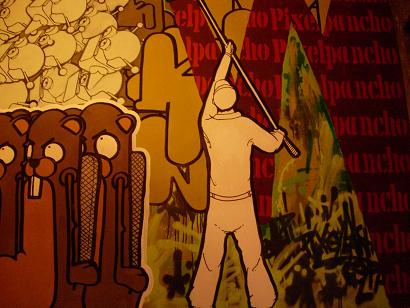
Before graffiti artists start bombing the streets, they typically learn how to write graffiti with pencil and paper. The following steps are intended to be an introduction to writing in graffiti.
Step1 Choose a word to write in graffiti. Many graffiti artists use their name or pseudonym.
Step2 Choose a graffiti style. There are dozens of unique styles for writing in graffiti. You might consider becoming familiar with different styles by taking note of professional pieces of graffiti in your city or online. One of the most popular graffiti styles for beginners is bubble letters.
Step3 Once you have found your graffiti style of choice, keep an example of it on hand for reference. Put your pencil to paper and make light strokes to mimic the style of your example. Erase and rewrite as necessary until you are satisfied with your pencil drawing.
Step4 Add details such as shading or graphics. Use your creativity. Keep it relatively simple until you grow comfortable writing more complex graffiti.
Step5 Use trace paper or a photo copier to make a copy of your completed pencil drawing. This will make it easy to start over in case you make a mistake in the next step.
Step6 Use a marker or pen to darken the pencil marks. Make them permanent. Use colored markers or crayons to fill in your letters and compete your graffiti writing.
Step7 Keep practicing and experimenting with graffiti to develop a unique style you can call your own.
